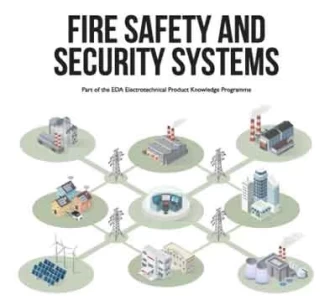Automated Emergency Response Systems in Building Automation

Automated Emergency Response Systems (AERS) in building automation are designed to enhance the safety and security of occupants and assets during emergencies. These systems integrate with communication platforms and coordinate with first responders, facilitating immediate and effective responses to incidents such as fires, natural disasters, or security breaches.
Building Automation Systems (BAS) play a crucial role in ensuring occupant safety within modern buildings. Traditionally, emergency response relied on manual actions, such as occupants activating fire alarms or contacting emergency services directly. However, advancements in automation technology are enabling the use of Automated Emergency Response Systems (AERS) within BAS.
AERS leverage automation and communication protocols to streamline emergency response within buildings. These systems can automatically trigger alarms, communicate critical information to first responders, and even initiate building-wide lockdowns or evacuations.
Visit Our Building Automation Study Course
Integration with Communication Platforms
Real-Time Alerts and Notifications
AERS can instantly send alerts and notifications to building occupants and emergency personnel through various communication channels, including smartphones, public address systems, and digital signage. This immediate dissemination of information is crucial for ensuring that individuals can react promptly and appropriately during emergencies.
Multi-Channel Communication
The integration of AERS with multi-channel communication platforms ensures that messages reach the intended recipients through multiple mediums, thus reducing the risk of communication failures. These platforms can automatically select the best communication channel based on the nature of the emergency and the recipient's location and preferences.
Coordination with First Responders
Detailed Data Sharing
AERS provide first responders with detailed, real-time data about the emergency, including the location of the incident, the nature of the threat, and the status of building systems. This information enables emergency personnel to plan and execute their response more effectively, potentially saving lives and minimizing property damage.
Dynamic Building Control
Automated systems can control building functions such as ventilation, lighting, and door locks, to facilitate emergency response. For example, they can direct occupants to safe exits, prevent access to dangerous areas, or ensure that pathways are adequately lit and clear for evacuees and responders.
Building-Wide Lockdowns and Evacuations
Automated Lockdown Procedures
In situations like security threats, AERS can initiate automatic lockdown procedures, securing doors and controlling access to different parts of the building. These automated actions help contain threats and protect occupants until first responders can take control of the situation.
Evacuation Coordination
During emergencies that require evacuation, AERS can manage the flow of people, guiding them to safe exits based on real-time conditions and avoiding congested pathways. This organized evacuation can prevent panic, reduce bottlenecks, and facilitate a smoother and safer exit process.
Challenges and Technical Considerations
System Integration and Interoperability
Effective AERS require seamless integration with existing building automation and security systems. Interoperability between different devices and platforms is crucial to ensure that all components work together harmoniously during emergencies.
Reliability and Testing
The reliability of AERS is paramount. Regular testing and maintenance are required to ensure that systems function correctly when needed. Failure to perform under emergency conditions can have dire consequences.
Privacy and Security
Implementing AERS involves handling sensitive data and controlling critical building functions. Ensuring the privacy and security of this data and protecting the system from unauthorized access or cyber-attacks is a significant concern.
Regulatory Compliance
AERS must comply with local, national, and international safety and security regulations. Meeting these standards is essential for legal compliance and the overall effectiveness of the emergency response.
Automated Emergency Response Systems are a vital component of modern building automation, enhancing the safety and security of occupants through advanced technology and integration with communication platforms and first responder networks. Despite the challenges and technical considerations involved, the implementation of AERS can significantly improve the preparedness and response to emergencies, ultimately saving lives and protecting property.






